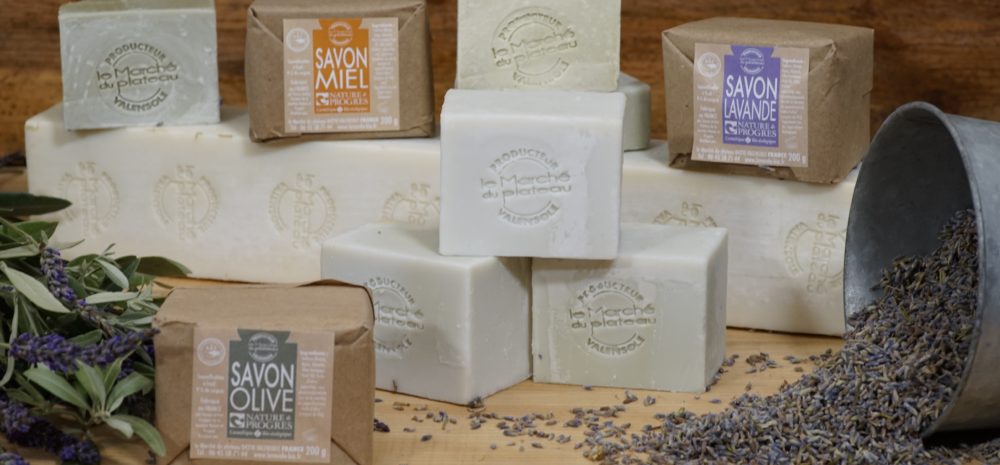
Cold saponification requires the use of 2 main ingredients: oils (or butters), which make up the fats, and soda (sodium hydroxide) used as a strong base. Once these compounds have been blended, soap-making can begin…
The transformation of fats into soap is the result of a chemical reaction. For several minutes at low temperature, soda gradually transforms vegetable oils and/or butters into soap. The advantage of working with temperatures below 30°C is that the properties of the ingredients used are preserved. During cold saponification, the mixture takes on the texture of a soap paste of varying thickness: this is the “trace” stage.
The latter is particularly important for the artisan soap-maker, who must ensure the consistency of his soap. When the trace appears, it’s also time to add the other natural ingredients that will make up cold-saponified soap: essential oils, mineral or vegetable colorants, plant powders, essential oils, honeys…
Once the soap dough has reached the desired consistency, it is poured into a mold and placed in the refrigerator to harden (generally for 24 to 48 hours). After demolding, comes the “curing” stage. The soap then sits in a dry, well-ventilated place for at least 4 weeks. The cure is important because it finalizes the saponification process, resulting in a softer soap that melts more slowly.




Our main activity is the growing of lavender and lavandin, a family history with us for four generations. For years we have been pioneers in organic farming and recognised for the high quality of our work.
It was during a family meal in 2015 that the idea of distributing our products directly came to us. Until then, we had been selling our produce to wholesalers or agricultural cooperatives.
So it was on this impetus that myself, Samuel (22) and my partner Emma (20) decided to devote ourselves to this crop full-time, leaving the production side to my father so that everyone had all the space they needed to best develop their part of the business.
Our main activity is the growing of lavender and lavandin, a family history with us for four generations. For years we have been pioneers in organic farming and recognised for the high quality of our work.
It was during a family meal in 2015 that the idea of distributing our products directly came to us. Until then, we had been selling our produce to wholesalers or agricultural cooperatives.
So it was on this impetus that myself, Samuel (22) and my partner Emma (20) decided to devote ourselves to this crop full-time, leaving the production side to my father so that everyone had all the space they needed to best develop their part of the business.